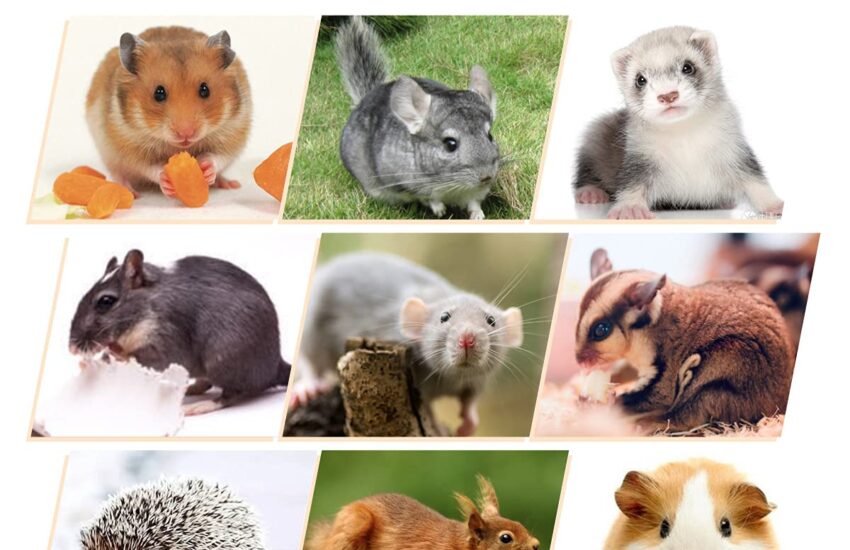Understanding Expectations for Hamster Breeds
If you’re considering adopting a hamster or are simply intrigued by these small furry companions, it’s essential to understand the different breeds and what to expect from each. This guide will provide valuable insights into various hamster breeds, including their temperament, care requirements, and unique characteristics. With the right information, you can choose the hamster that best suits your lifestyle and preferences.
Popular Hamster Breeds and Their Characteristics
There are several commonly found hamster breeds, each with its own distinct traits. Understanding these characteristics is crucial for ensuring that you are prepared to meet your future pet’s needs. The most popular breeds include the Syrian hamster, Roborovski dwarf hamster, Campbell’s dwarf hamster, and the Russian dwarf hamster. Each of these breeds has unique behavioral patterns and care requirements.
Syrian Hamster: The Most Common Breed
The Syrian hamster, often referred to as the golden hamster, is perhaps the most well-known breed. Known for their friendly demeanor, they are generally solitary animals that thrive when kept alone. They are larger than most other breeds, usually growing up to 6-7 inches in length. Syrian hamsters are engaging pets; their curious nature makes them excellent companions for families. However, they require ample space to explore and play, so a spacious cage with plenty of toys is vital for their happiness. 
Dwarf Hamsters: Small and Social
Dwarf hamsters, including the Roborovski, Campbell’s, and Russian breeds, are smaller than their Syrian cousins, generally measuring between 2-4 inches. These little creatures are often social and can be housed in pairs or groups, making them entertaining to watch. However, each breed has its personality; for instance, Roborowski hamsters are known for their skittishness, while Campbell’s hamsters tend to be more docile. Regardless of the type, ensure that their habitat is enriched with tunnels, hiding spots, and exercise wheels to cater to their playful nature.
Care Requirements for Different Hamster Breeds
Caring for hamsters differs depending on the species. It’s critical to understand their needs regarding habitat, diet, and general well-being. Each breed has specific requirements for their environment, and meeting those needs will lead to a happy and healthy hamster.
Habitat Essentials for Hamsters
All hamsters need a clean, spacious habitat to thrive. Syrians need a larger cage because of their size, ideally at least 24 inches long, while dwarf hamsters can do fine in a slightly smaller space. Ensure the enclosure has proper bedding, such as aspen shavings or paper-based products, to burrow in. Clean the cage regularly and check for a secure lid, as hamsters are known escapists. Familiarize yourself with your hamster’s specific habitat preferences; some may prefer more climbing opportunities, while others enjoy hiding places. 
Dietary Needs of Your Hamster
The dietary requirements may vary immensely among hamster breeds. Generally, a balanced diet should include high-quality hamster pellets, fresh fruits, and veggies. Avoid feeding them citrus fruits as they can cause digestive issues. Treats such as oats or sunflower seeds can be given in moderation to ensure they remain healthy. Understanding the specific dietary restrictions and preferences of your hamster breed is vital for maintaining their health. Dwarf hamsters may have different nutritional needs compared to Syrians due to their smaller size, so adjust their diet accordingly.
Behavioral Expectations: Bonding With Your Pet
Different hamster breeds exhibit a spectrum of behaviors that are essential to recognize for successful pet ownership. While some are independent and solitary, others may enjoy social interactions, impacting how you engage with your pet.
Understanding Syrian Hamster Behavior
Syrian hamsters are generally friendly and can be easily trained to recognize and respond to their owners. Due to their solitary nature, they may show territorial behaviors if another hamster is in their territory. When handled gently, they can be quite affectionate. Spend time with your Syrian hamster, allowing them to explore your hand before attempting to pick them up; this builds trust between you and your pet. 
Dwarf Hamster Social Interactions
Dwarf hamsters, particularly Roborovski and Campbell’s, thrive in social environments. They often engage in playful activities with their cage mates and may need proper introductions to ensure they live harmoniously. Correctly bonding with them can lead to wonderful displays of companionship; however, it’s essential to monitor their interactions closely. Every hamster has its personality, and some may prefer solitude even within the dwarf category.
Health Expectations for Hamster Breeds
Ensuring the health of your hamster is paramount, and being aware of breed-specific health issues can help prevent problems down the line. Regular veterinary check-ups should be part of your hamster’s care to address any health needs proactively.
Common Health Issues in Syrian Hamsters
Syrian hamsters can be prone to health issues such as obesity and dental problems. A proper diet and regular exercise can combat these risks significantly. Since they have a higher chance of developing tumors, regular health examinations by a vet who specializes in small animals can help detect these problems early. Providing a stress-free environment will also contribute to their overall well-being. 
Health Considerations for Dwarf Hamsters
Dwarf hamsters also face certain health challenges, such as diabetes, especially Campbell’s dwarfs. Analyzing their diet and keeping them active is essential in managing these risks. Signs of obesity or similar health issues should be addressed immediately with dietary adjustments and increased playtime. By understanding each breed’s health expectations, you can provide proactive care and maintain a long, happy life for your furry friend.
Key Takeaways
- Learn about popular hamster breeds’ characteristics, temperaments, and care needs.
- Ensure proper habitat, diet, and health considerations are tailored to your specific breed.
- Understand the behavioral tendencies of your chosen breed to enhance bonding experiences.
FAQ
1. What is the lifespan of a typical hamster breed?
The lifespan of hamsters varies by breed: Syrian hamsters typically live 2-3 years, while dwarf hamsters often have slightly longer lifespans of 2-4 years, depending on care and health. Providing a stress-free environment, proper nutrition, and medical care can contribute significantly to their longevity.
2. How often should I clean my hamster’s cage?
It’s recommended to clean your hamster’s cage at least once a week. Always remove uneaten food, waste, and soiled bedding to maintain a healthy environment. A deep clean, which includes replacing the bedding and cleaning the cage with mild soap, should happen every 2-4 weeks.
3. Can hamsters be litter trained?
Yes, hamsters can be trained to use a designated area as a litter box. Typically, they prefer corners for this purpose. You can use small animal litter to encourage them. Consistency and patience are key in establishing this habit.
4. Are hamsters suitable pets for children?
Hamsters can be great pets for children, especially if they’re older and can understand how to handle them gently. Ensure that adults supervise any interactions to prevent accidents. Teach children responsible care techniques to foster a positive experience for both the pet and the child.
5. What should I do if my hamster isn’t eating?
If your hamster isn’t eating, assess their environment for stressors, such as temperature changes or exposure to other pets. Offer fresh fruits and vegetables to entice them. If the issue persists for more than a day, consult with a veterinarian, as it may indicate a health issue that requires professional attention.
